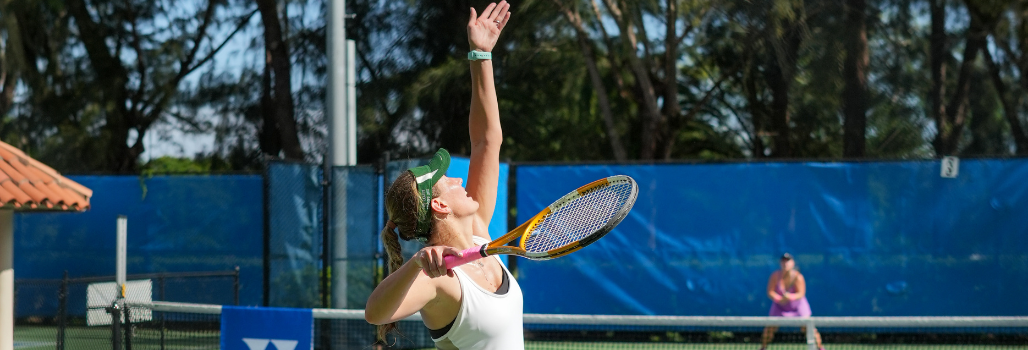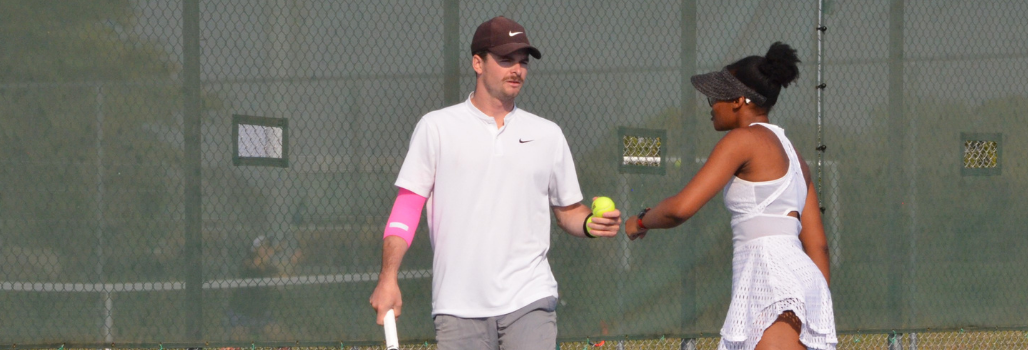Tennis is one of those rare sports where power and precision blend beautifully — and nowhere is that balance more jaw-dropping than in a truly great serve. From club courts in Miami to the grand stages of the U.S. Open, a blistering serve can set the tone, shift momentum, and leave opponents frozen in disbelief.
So, what is the fastest tennis serve on record? And more importantly — what can league tennis players learn from the pros who’ve perfected the art of the serve?
The Fastest Serve in Professional Tennis
The record for the fastest tennis serve belongs to Australian player Sam Groth, who unleashed a 163.7 mph (263.4 km/h) rocket during a 2012 Challenger match in South Korea. Although not hit during an official United States Tennis Association Tennis Link–sanctioned event, it remains the fastest recorded serve in professional tennis history.
In officially recognized ATP and WTA play, American John Isner leads the pack with a 157.2 mph serve, followed closely by Ivo Karlović at 156 mph. On the women’s side, Sabine Lisicki once recorded a 131 mph serve — a record that still stands today.
These athletes didn’t just rely on brute strength. Their serves were built on years of technical mastery, explosive leg drive, and perfect timing — skills that United States Tennis Federation coaches and training programs consistently emphasize for all competitive players.
Why the Serve Matters at Every Level
Whether you’re playing at Wimbledon or in a Miami tennis league, the serve is often your most important weapon. It’s the one shot you completely control — no rallies, no surprises. Just you, the ball, and your ability to start the point on your terms.
Strong serving isn’t just about power; it’s about placement, rhythm, and confidence. For players in working women’s tennis leagues or local league tennis divisions, developing a reliable first serve can be the difference between holding your ground or falling behind early in a set.
At Gladiator Tennis, players of all levels — from newcomers to 4.5+ competitors — often find that consistent serving turns close matches into wins. And because Gladiator leagues are flexible and level-based, you can work on your serve at your own pace, in real match settings, without the rigid structure of club play.
How to Improve Your Serve (Without Breaking the Radar Gun)
You don’t need to chase 160 mph to have an effective serve. What really separates great servers from average ones is consistency and disguise. Here are a few pro-inspired tips you can use in your next league tennis match:
-
Master the Toss – The best serves start with a repeatable toss. Keep your arm straight, release at eye level, and aim for the ball to peak just slightly in front of you.
-
Use Your Legs – Power starts from the ground up. A strong leg drive adds both pace and spin, helping you control your delivery without overusing your shoulder.
-
Mix It Up – Varying spin, placement, and pace keeps opponents guessing. Even at the recreational level, unpredictability wins points.
-
Practice With Purpose – When you join a Miami tennis league or working women’s tennis league, use matches as live practice sessions. Focus on targets, not just speed.
The Evolution of the Modern Serve
In the early days of United States tennis, serves were more about placement than power. Players like Rod Laver and Billie Jean King relied on finesse, using spin to set up volley opportunities. But with advancements in racket technology and fitness training, the modern serve evolved into a weapon of mass intimidation.
Today’s top players use biomechanics and data analysis — often measured through United States Tennis Association Tennis Link or ATP performance tracking — to fine-tune every aspect of their motion. The result? Serves that combine incredible power with laser-like accuracy.
Still, the beauty of tennis lies in the fact that every player — from juniors to 50-plus tennis competitors — can find their own version of a “fast serve.” It might not break records, but it can still dominate a match.
Takeaway: Speed Isn’t Everything — Control Is
Yes, the fastest tennis serves in history are awe-inspiring. But the true magic of serving lies in your ability to take control of the game from the very first shot. Whether you’re competing in a Miami tennis league, part of a working women’s tennis league, or just picking up a racquet for fun, mastering your serve gives you confidence and consistency — two traits every great player shares.
At Gladiator Tennis, we believe every player deserves a platform to test their skills, connect with local competitors, and push their game forward. With flexible scheduling, level-based divisions, and local match play, Gladiator makes it easy to find your next challenge — and maybe even record your fastest serve yet.
Come test your serve in Gladiator Tennis matches across Miami Beach and Dade County.
Visit GladiatorTennis.com to register for your local league and experience the best of United States tennis competition — on your schedule, at your skill level, and on courts near you.
Your serve might not set a world record… but it could set the tone for your next big win.




